Joseph Grigley's Instruction (2018)
This installation was created for the Juliet Art Museum’s do it exhibition. Artists were invited to interpret a curated set of instructions by other artists. The instruction I interpreted was written by Joseph Grigely in 2002, which directs participants to “watch television with the sound off for one hour.” Grigley’s instruction was inspired by his hearing impairment, which influenced much of his artwork throughout his life.
The instruction made me question what accounts for the act of watching television. What level of focus is required for it to be considered watching? Often the television serves as a visual background to other activities such as reading, playing games, or engaging in conversation. Therefore, watching TV can be as social an act as it can be private. For better or worse, the television has served as the anchor of living rooms across America since the dawn of its invention and shows no sign of vanishing. Visitors to the museum were invited to sit in the installation, make themselves at home and interact with it as they pleased.
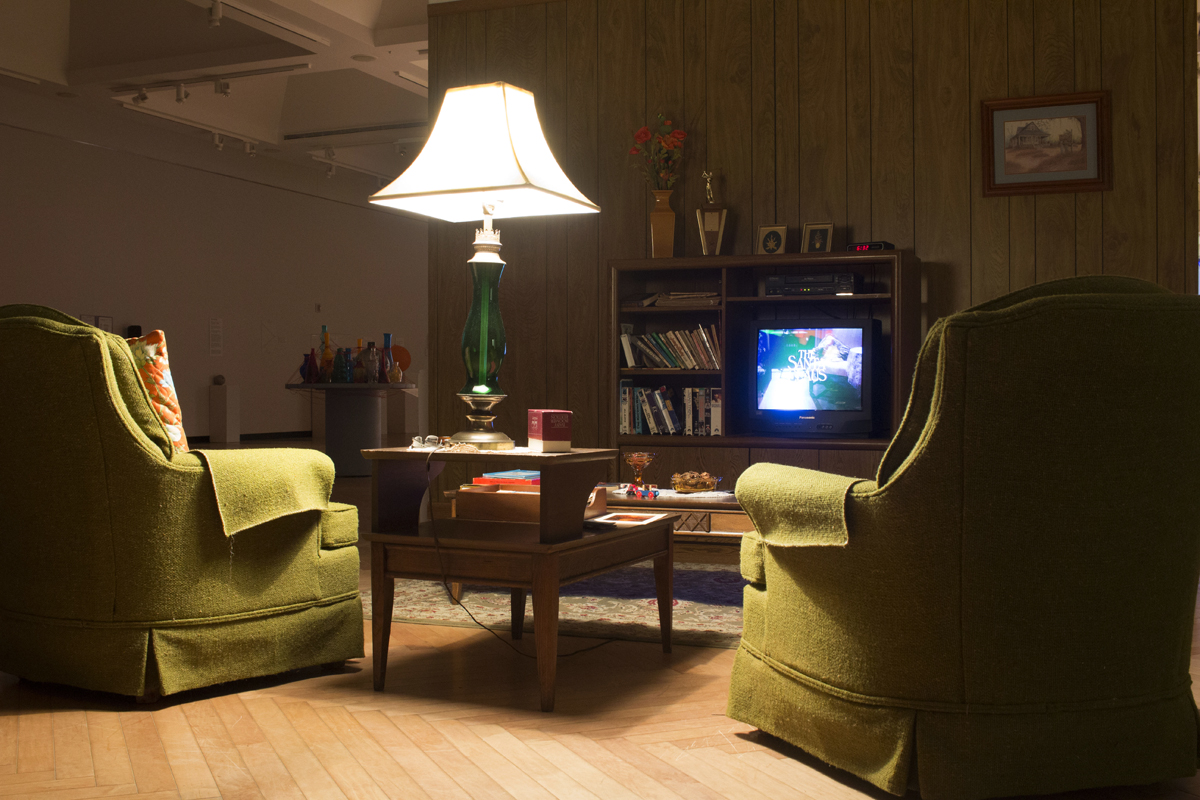
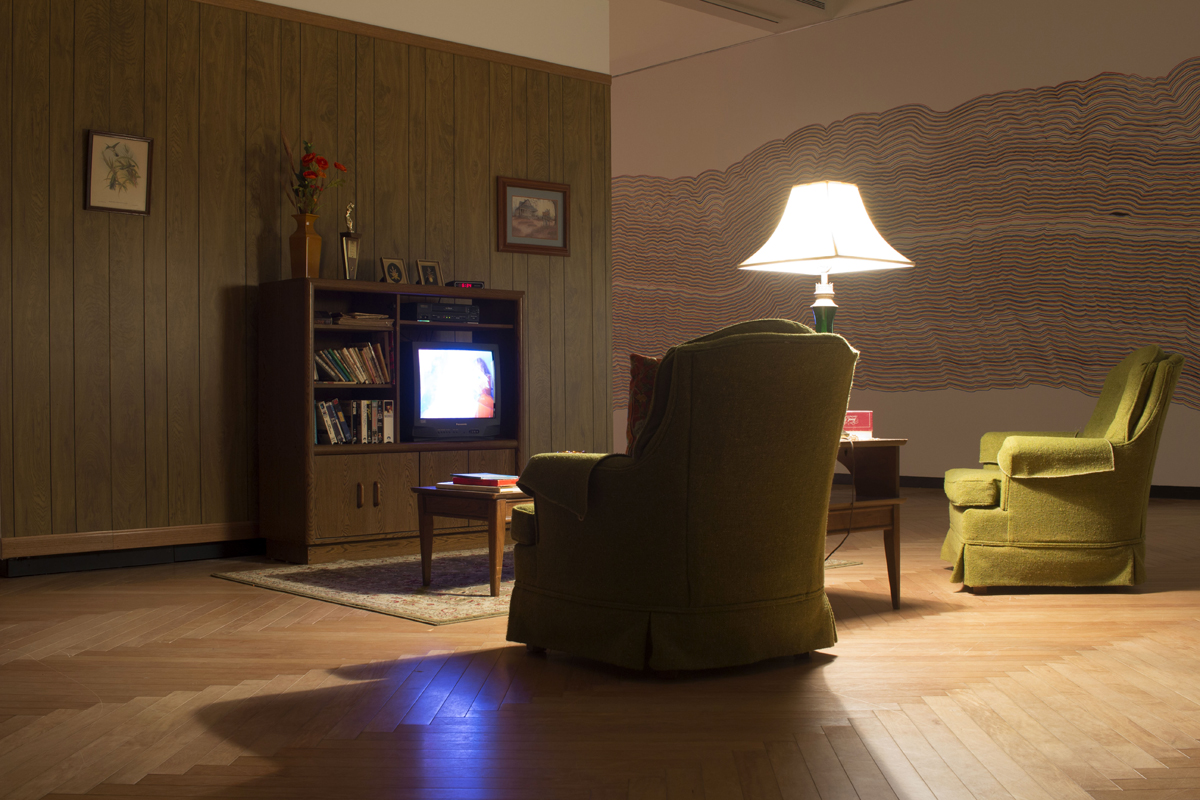

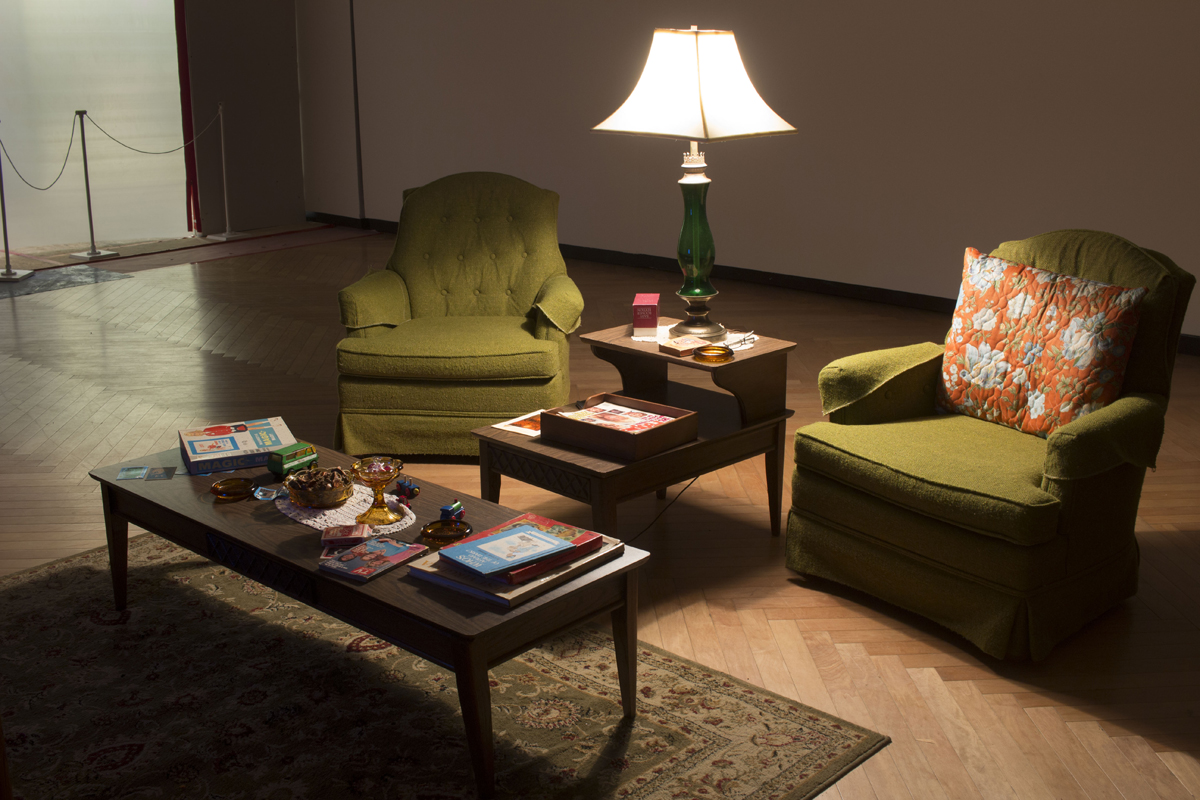
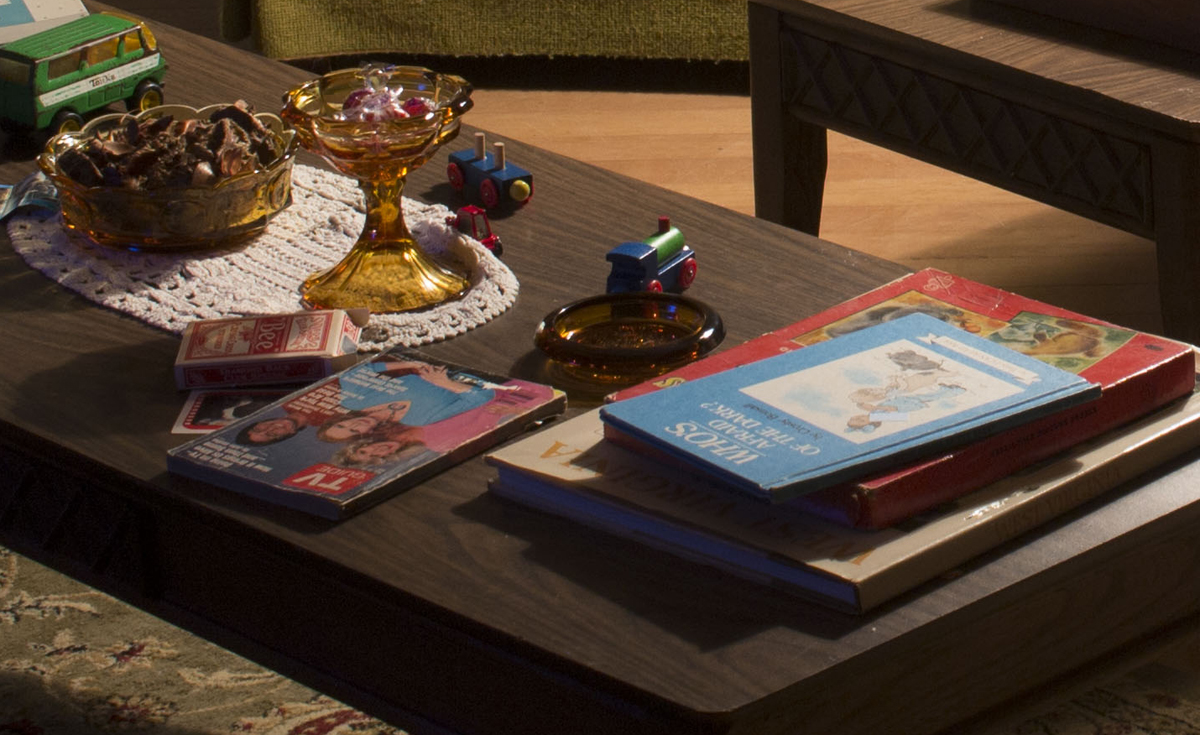
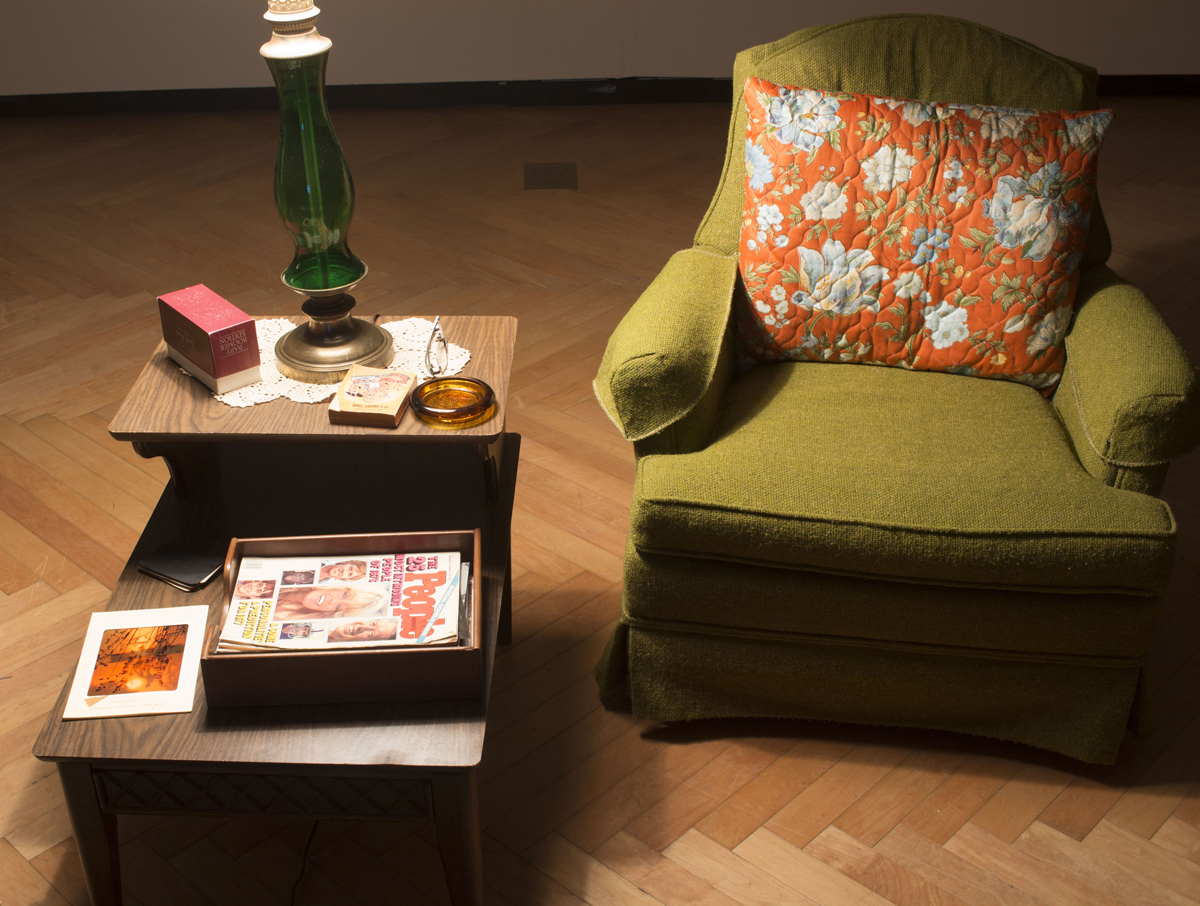

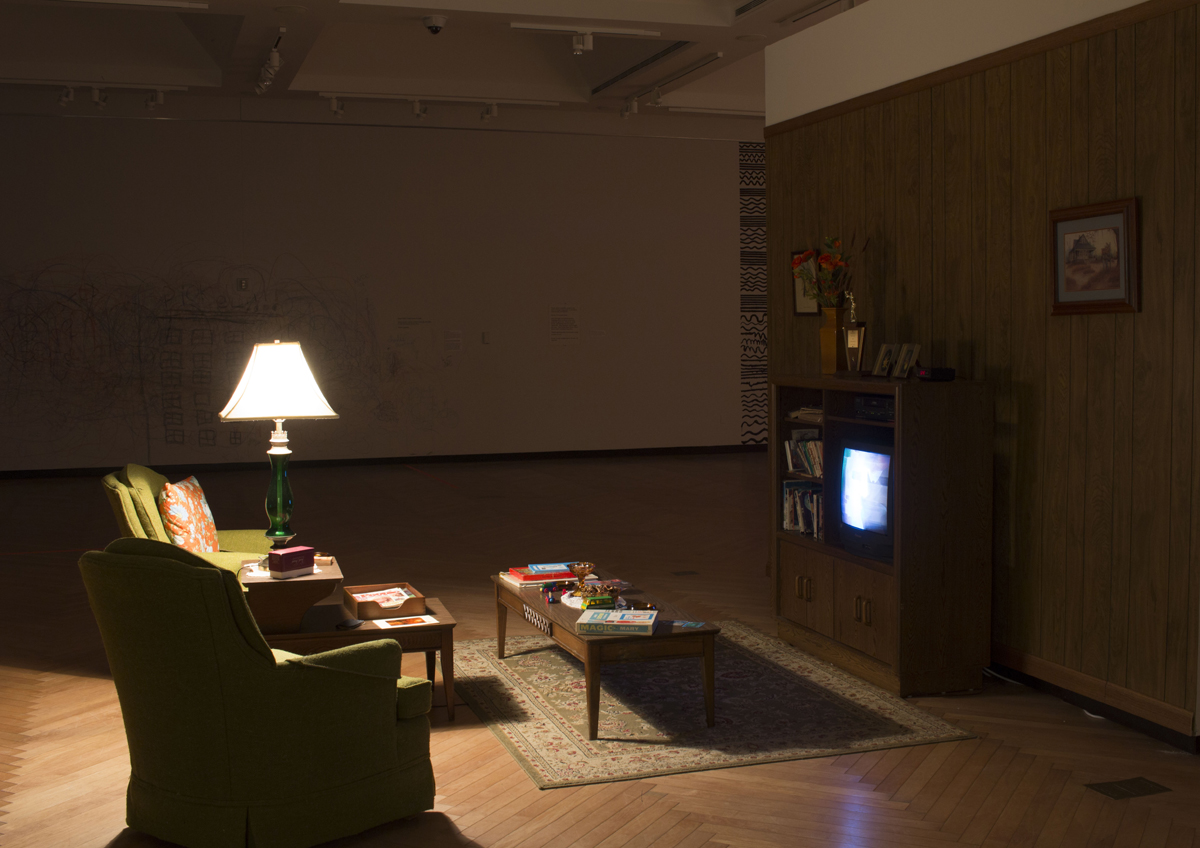

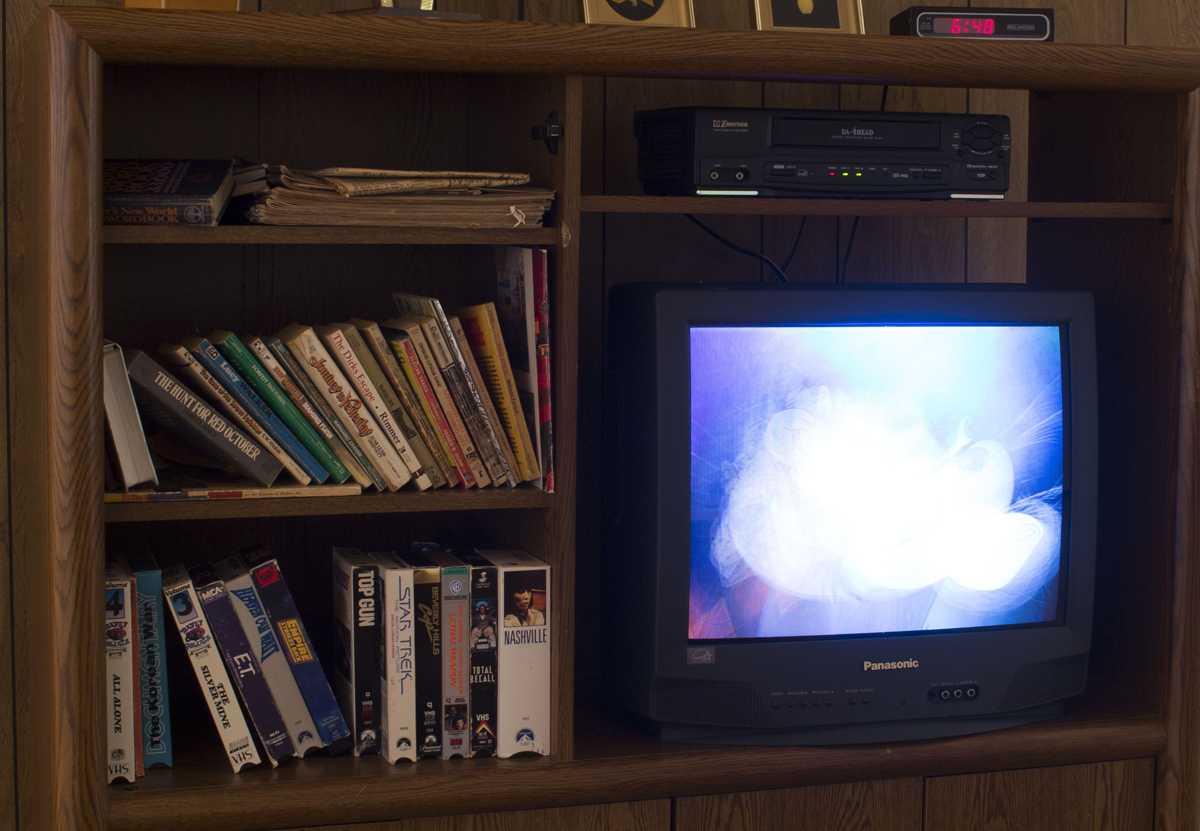
More about: do it
do it began in Paris in 1993 as a conversation between curator Hans Ulrich Obrist and artists Christian Boltanski and Bertrand Lavier. They were curious to see what would happen if they started an exhibition that could constantly generate new versions of itself. To test the idea, they invited 12 artists to propose artworks based on written “scores” or instructions that can be openly interpreted every time they are presented. The instructions were then translated into 9 different languages and circulated internationally as a book.
Since then, hundreds of artists have been invited to submit instructions, and do it has taken place all over the world from Austria to Australia, from Thailand to Uruguay, from Canada to Iceland, giving new meaning to the concept of an exhibition in progress. Each do it exhibition is uniquely site-specific because it engages the local community in a dialogue that responds to a set of instructions. As a result, do it is less concerned with copies, images, or reproductions of artworks, than with human interpretation. No two iterations of the same instructions are ever identical.
